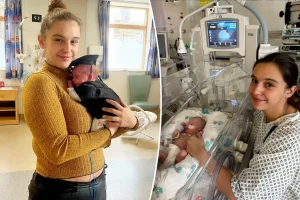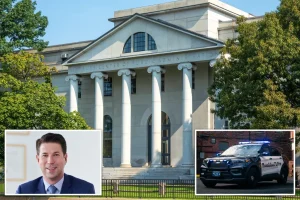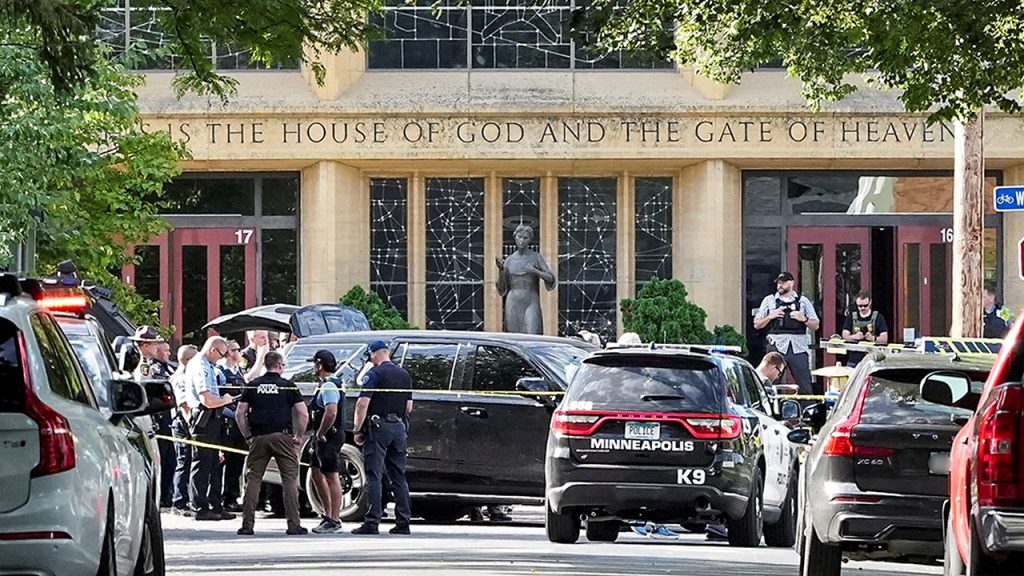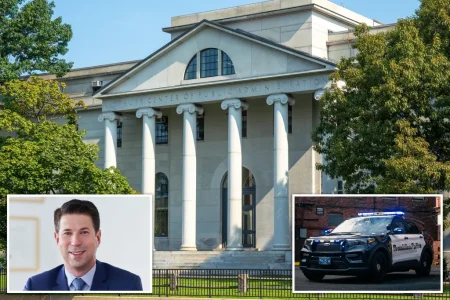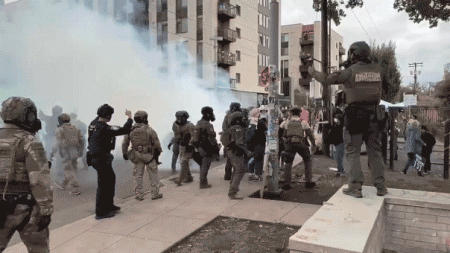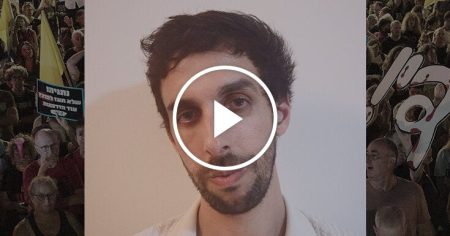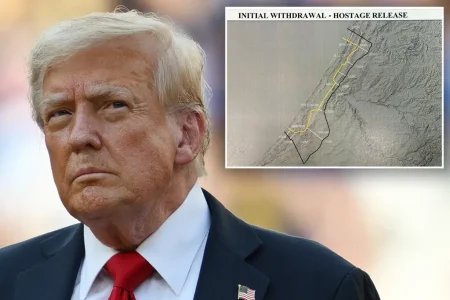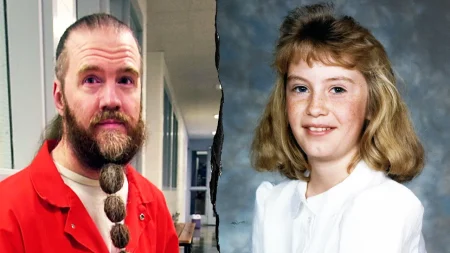Tragedy and Heroism: The Minneapolis Church Shooting Through 911 Calls
The newly released 911 transcripts from the August 27 mass shooting at Annunciation Catholic Church in Minneapolis reveal a haunting portrait of terror, bravery, and resilience in the face of unimaginable violence. The transcripts capture the voices of those caught in the nightmare as it unfolded—teachers whispering to calm frightened children, staff directing students to hide under pews, and passersby witnessing the horrific scene from outside. Through these desperate calls for help, we see both the darkest and brightest aspects of humanity: the senseless violence that claimed two young lives and injured eighteen others, and the remarkable courage of educators and church staff who protected children with their own bodies and quick thinking.
“Dear God, dear God in heaven, there’s some guns in Annunciation Church, on 54th,” whispered Karen McCann, a parishioner hiding in the sanctuary, her voice trembling as she spoke to the 911 dispatcher. “We’re all crouched down under the — it just happened. We’re crouched under the pews… it’s a whole bunch of people here. He might be coming in the church again.” Outside the church, witnesses described a chilling scene as the gunman, later identified as Robin Westman, approached the building in tactical gear. Jillian Mai, a parent driving past, reported seeing a man “in head-to-toe camo gear” with “black goggles… standing in place next to the church,” while neighbor Caitlin Nolan observed him “shooting at the church” with what she described as a “black, gigantic” weapon that “had to be automatic.” The first calls began coming in around 8:27 a.m., as students were preparing for morning prayer, with one caller reporting: “There’s gunshots — there’s like gunshots all over… must have been 20, all together in a bunch of different bursts.”
Inside the church, as bullets tore through the sanctuary, teachers and staff demonstrated extraordinary courage and presence of mind. Becca Hare, a fourth-grade teacher, reported the emergency while simultaneously comforting and directing children: “I don’t know how many people are here, but there are people hurt,” she told the dispatcher, then immediately shifted her attention back to her students: “Stay down, stay down, okay… I’m going to go help, I’m going to go help.” Another teacher, identified only as Diane, managed to secure children in the church basement, where she and her aides barricaded the doors and sheltered students who had fled from other areas. “We were downstairs having crackers and all of a sudden we heard gunshots… there’s a whole bunch of kids started coming in ’cause they’re running from everywhere,” she explained. “We’re in the church basement, locked in the classroom right now.” These quick actions likely saved numerous lives, keeping the children safe from the gunfire raging above them.
Father Dennis Zehren’s call confirmed the worst fears of emergency responders—that children were present during the active shooting. As police arrived on scene, the focus shifted from sheltering in place to evacuation. We hear this transition in Becca Hare’s call as she begins organizing the injured and uninjured students: “People just asked if someone was hurt and they said yes,” Hare reported. Then, addressing those around her: “If you’re injured and you can walk, could you walk?… Injured are going, we are evacuating. We are going to the school, we are going to the school. It’s okay, I promise.” Her reassurance to frightened children—”It’s okay, I promise”—stands as perhaps the most poignant moment in the transcripts, revealing the protective instinct of educators who found themselves suddenly thrust into an unthinkable situation.
The violence wasn’t contained solely to the church grounds. Timothy Barnes, a motorist driving past as the shooting began, reported that two stray bullets struck his vehicle. “I saw a guy start shooting and my car got hit by bullets,” Barnes told dispatchers, describing the shooter as wearing “all-black tactical gear with an assault rifle” and standing “between the school and the church in a green space.” Police documents later confirmed that the gunman, Robin Westman, died by suicide at the scene. Notably, in the Minneapolis police offense report obtained alongside the 911 transcripts, investigators classified the attack with “no bias” motivation—meaning it was not categorized as a hate crime under Minnesota’s state reporting standards, despite targeting a Catholic church and school.
The human toll of this tragedy is measured not just in statistics but in names and stories. Two children—Fletcher Merkel and Harper Moyski—lost their lives that day. Eighteen others were injured, fifteen of them children. Among the wounded was Sophia Forchas, who was shot in the head but is making what family members have described as a “miraculous” recovery. In the aftermath of the shooting, the community has rallied around the victims and their families, demonstrating the resilience that often emerges from the darkest moments of human experience. The 911 transcripts, with all their raw emotion and immediacy, offer a window into both the horror of mass violence and the instinctive heroism of ordinary people protecting those in their care. They remind us that in moments of crisis, teachers, clergy, and staff become the first line of defense for our children—not because they chose this role, but because their love and commitment leave them no other choice.
